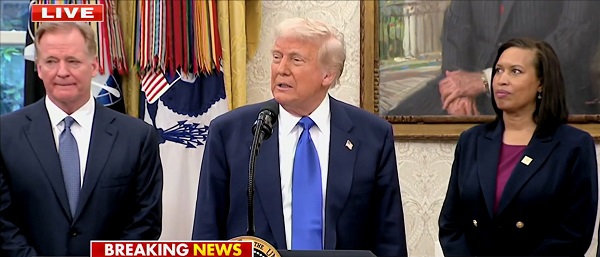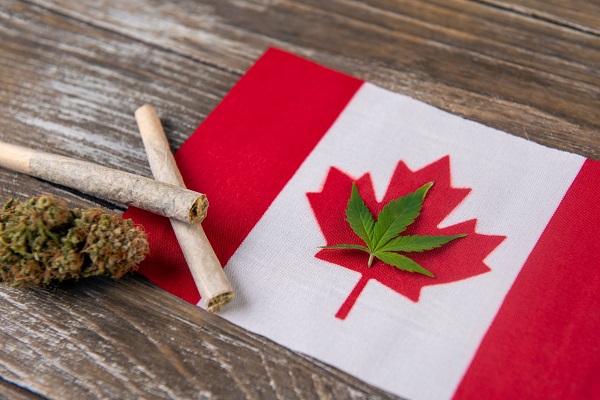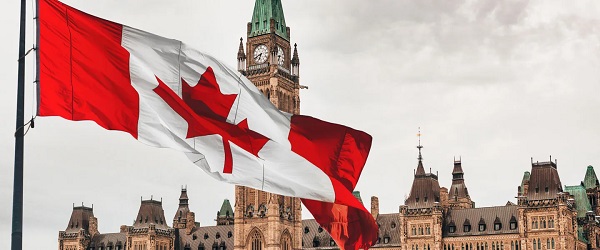Energy
Resource Works Margareta Dovgal on B.C. Climate Policies, and Their Implications

From EnergyNow.ca
By Margareta Dovgal
In the midst of a memorable polar cold snap in January, British Columbia faced a stark reality that should serve as a valuable lesson for climate activists and policymakers alike. As Stewart Muir, the founder of our organization, aptly pointed out at the time, “When it’s cold like now, BC gets two thirds of its energy for heating, etc., from natural gas. Promises to ditch the fuel by 2030, 2035, 2050, are political theatre to be taken with a large scoop of road salt.”
The deep freeze eventually thawed, but it left behind a lingering question about the feasibility of ambitious climate policies in a province heavily reliant on natural gas for its energy needs. The provincial government responded with a proposal to ban conventional gas equipment in new residential, commercial, and institutional buildings by 2030. This move would not only prohibit the sale and installation of gas water heaters but also impose restrictions on new gas furnaces and boilers, permitting them only as part of a hybrid dual-fuel system that integrates electric or gas heat pumps with conventional gas combustion appliances.
While the government embarked on consultations with natural gas contractors, First Nations, and other stakeholders, the public sentiment was reflected in a Castanet news service poll in the Okanagan region. The poll asked, “Should BC ban the use of conventional natural gas for home heating as of 2030?” The results were strikingly clear:
- No: 12,460 (91%)
- Yes: 725 (5.3%)
- Unsure: 501 (3.7%)
However, the proposal to shift away from natural gas raised concerns about BC’s electricity infrastructure. During the cold snap, the province had to import 15% of its electricity, and when Alberta faced even colder temperatures, BC had to step in and send power across the border. Contractors like Al Russell of Prince George questioned the province’s ability to meet increased electricity demands, especially with the limitations of existing infrastructure.
Russell pointed out the need for significant upgrades to the electricity grid, including more and larger transmission lines and transformers. The pressing question remained: “Where are we getting this power from and how are we getting it there? When does this expansion start, and how much will it cost?”
These concerns are not unique to BC. A recent report from the Public Policy Forum emphasized that to achieve its goal of net-zero emissions by 2050, Canada must invest heavily in expanding its electricity generation capacity. This ambitious undertaking comes with a potentially significant cost, with the report envisioning a landscape filled with new dams, turbines, nuclear plants, and solar panels.
Even though BC’s BC Hydro once maintained that no additional power generation was needed, the province now anticipates a shift from a surplus to a deficit of power by 2030, even with the Site C power dam set to be operational by 2025. Consequently, BC Hydro plans to seek new clean and renewable energy sources through a competitive process, inviting power providers to contribute to the province’s energy needs.
Premier David Eby has also announced a significant update to Hydro’s 10-year capital plan, earmarking nearly $36 billion for community and regional infrastructure projects by 2034. However, building new transmission lines in the past has proven to be a lengthy process, taking anywhere from eight to ten years. Eby himself acknowledged that such delays were unacceptable.
Chair of the Energy Futures Initiative, Barry Penner, highlighted the findings of the North American Electric Reliability Corporation, which forecasted increased energy risks for BC in 2026 due to rising demand and the retirement of natural-gas-fired generation.
All these developments transpire as BC advances its CleanBC policy and program. Yet, the BC Business Council voiced concerns about the economic implications, stating that the provincial government’s policies could potentially shrink BC’s economy by $28 billion by 2030, setting prosperity back more than a decade.
The cold snap served as a reminder that the impact of these policies goes beyond mere comfort or convenience. In northern climates like BC’s, extreme cold can pose significant hazards to human health, wellness, and survivability. It also underscores the importance of stable and secure infrastructure, especially with the risk of water pipes bursting during freezing temperatures.
As BC strives to replace some natural gas services with electricity, affordability becomes a pressing concern. There are three key aspects to consider:
- Capital and Operating Costs: Transitioning to electricity comes with increased costs compared to running natural gas systems.
- Heat Pump Installation: Installing heat pumps adds to the financial burden.
- Housing and Rent Costs: The ripple effect of increased costs may result in higher housing and rent expenses, exacerbating affordability challenges in the region.
An editorial from The Orca labeled BC’s natural gas plan as ‘all hot air,’ expressing concerns about making new homes more expensive to build and live in, especially during a housing crisis.
The climate policies in BC carry significant implications, not only for the affordability of living in the province but also for its economic growth and stability. These policies have the potential to impact the types of jobs available, their associated wages, and the province’s global competitiveness.
The net outcome of these policies could determine the fate of industries deeply rooted in BC’s history. If these industries can no longer thrive due to regulatory changes, it may have far-reaching consequences for the well-being of the province’s residents.
As BC navigates this complex landscape, there is an opportunity for the provincial government to engage with and consider the concerns of the public. With an election year on the horizon, the public should continue to ask questions, seek clarity, and actively participate in shaping the future of their province.
- Margareta Dovgal on these issues, and more, on Vancouver’s Spice Radio: https://ow.ly/hxsB50QvfJ9
Margareta Dovgal is Managing Director of Resource Works. Based in Vancouver, she holds a Master of Public Administration in Energy, Technology and Climate Policy from University College London. Beyond her regular advocacy on natural resources, environment, and economic policy, Margareta also leads our annual Indigenous Partnerships Success Showcase. She can be found on Twitter and LinkedIn.
Automotive
Federal government should swiftly axe foolish EV mandate

From the Fraser Institute
Two recent events exemplify the fundamental irrationality that is Canada’s electric vehicle (EV) policy.
First, the Carney government re-committed to Justin Trudeau’s EV transition mandate that by 2035 all (that’s 100 per cent) of new car sales in Canada consist of “zero emission vehicles” including battery EVs, plug-in hybrid EVs and fuel-cell powered vehicles (which are virtually non-existent in today’s market). This policy has been a foolish idea since inception. The mass of car-buyers in Canada showed little desire to buy them in 2022, when the government announced the plan, and they still don’t want them.
Second, President Trump’s “Big Beautiful” budget bill has slashed taxpayer subsidies for buying new and used EVs, ended federal support for EV charging stations, and limited the ability of states to use fuel standards to force EVs onto the sales lot. Of course, Canada should not craft policy to simply match U.S. policy, but in light of policy changes south of the border Canadian policymakers would be wise to give their own EV policies a rethink.
And in this case, a rethink—that is, scrapping Ottawa’s mandate—would only benefit most Canadians. Indeed, most Canadians disapprove of the mandate; most do not want to buy EVs; most can’t afford to buy EVs (which are more expensive than traditional internal combustion vehicles and more expensive to insure and repair); and if they do manage to swing the cost of an EV, most will likely find it difficult to find public charging stations.
Also, consider this. Globally, the mining sector likely lacks the ability to keep up with the supply of metals needed to produce EVs and satisfy government mandates like we have in Canada, potentially further driving up production costs and ultimately sticker prices.
Finally, if you’re worried about losing the climate and environmental benefits of an EV transition, you should, well, not worry that much. The benefits of vehicle electrification for climate/environmental risk reduction have been oversold. In some circumstances EVs can help reduce GHG emissions—in others, they can make them worse. It depends on the fuel used to generate electricity used to charge them. And EVs have environmental negatives of their own—their fancy tires cause a lot of fine particulate pollution, one of the more harmful types of air pollution that can affect our health. And when they burst into flames (which they do with disturbing regularity) they spew toxic metals and plastics into the air with abandon.
So, to sum up in point form. Prime Minister Carney’s government has re-upped its commitment to the Trudeau-era 2035 EV mandate even while Canadians have shown for years that most don’t want to buy them. EVs don’t provide meaningful environmental benefits. They represent the worst of public policy (picking winning or losing technologies in mass markets). They are unjust (tax-robbing people who can’t afford them to subsidize those who can). And taxpayer-funded “investments” in EVs and EV-battery technology will likely be wasted in light of the diminishing U.S. market for Canadian EV tech.
If ever there was a policy so justifiably axed on its failed merits, it’s Ottawa’s EV mandate. Hopefully, the pragmatists we’ve heard much about since Carney’s election victory will acknowledge EV reality.
Daily Caller
Trump Issues Order To End Green Energy Gravy Train, Cites National Security


From the Daily Caller News Foundation
By Audrey Streb
President Donald Trump issued an executive order calling for the end of green energy subsidies by strengthening provisions in the One Big Beautiful Bill Act on Monday night, citing national security concerns and unnecessary costs to taxpayers.
The order argues that a heavy reliance on green energy subsidies compromise the reliability of the power grid and undermines energy independence. Trump called for the U.S. to “rapidly eliminate” federal green energy subsidies and to “build upon and strengthen” the repeal of wind and solar tax credits remaining in the reconciliation law in the order, directing the Treasury Department to enforce the phase-out of tax credits.
“For too long, the Federal Government has forced American taxpayers to subsidize expensive and unreliable energy sources like wind and solar,” the order states. “Reliance on so-called ‘green’ subsidies threatens national security by making the United States dependent on supply chains controlled by foreign adversaries.”
Dear Readers:
As a nonprofit, we are dependent on the generosity of our readers.
Please consider making a small donation of any amount here.
Thank you!
Former President Joe Biden established massive green energy subsidies under his signature 2022 Inflation Reduction Act (IRA), which did not receive a single Republican vote.
The reconciliation package did not immediately terminate Biden-era federal subsidies for green energy technology, phasing them out over time instead, though some policy experts argued that drawn-out timelines could lead to an indefinite continuation of subsidies. Trump’s executive order alludes to potential loopholes in the bill, calling for a review by Secretary of the Treasury Scott Bessent to ensure that green energy projects that have a “beginning of construction” tax credit deadline are not “circumvented.”
Additionally, the executive order directs the U.S. to end taxpayer support for green energy supply chains that are controlled by foreign adversaries, alluding to China’s supply chain dominance for solar and wind. Trump also specifically highlighted costs to taxpayers, market distortions and environmental impacts of subsidized green energy development in explaining the policy.
Ahead of the reconciliation bill becoming law, Trump told Republicans that “we’ve got all the cards, and we are going to use them.” Several House Republicans noted that the president said he would use executive authority to enhance the bill and strictly enforce phase-outs, which helped persuade some conservatives to back the bill.
-

 Also Interesting2 days ago
Also Interesting2 days ago9 Things You Should Know About PK/PD in Drug Research
-

 Business2 days ago
Business2 days ago‘Experts’ Warned Free Markets Would Ruin Argentina — Looks Like They Were Dead Wrong
-

 Business2 days ago
Business2 days agoCannabis Legalization Is Starting to Look Like a Really Dumb Idea
-

 Bruce Dowbiggin1 day ago
Bruce Dowbiggin1 day agoThe Covid 19 Disaster: When Do We Get The Apologies?
-

 Media2 days ago
Media2 days agoCBC journalist quits, accuses outlet of anti-Conservative bias and censorship
-

 Business1 day ago
Business1 day agoCarney government should recognize that private sector drives Canada’s economy
-

 Automotive2 days ago
Automotive2 days agoAmerica’s EV Industry Must Now Compete On A Level Playing Field
-

 Alberta1 day ago
Alberta1 day agoFourteen regional advisory councils will shape health care planning and delivery in Alberta






